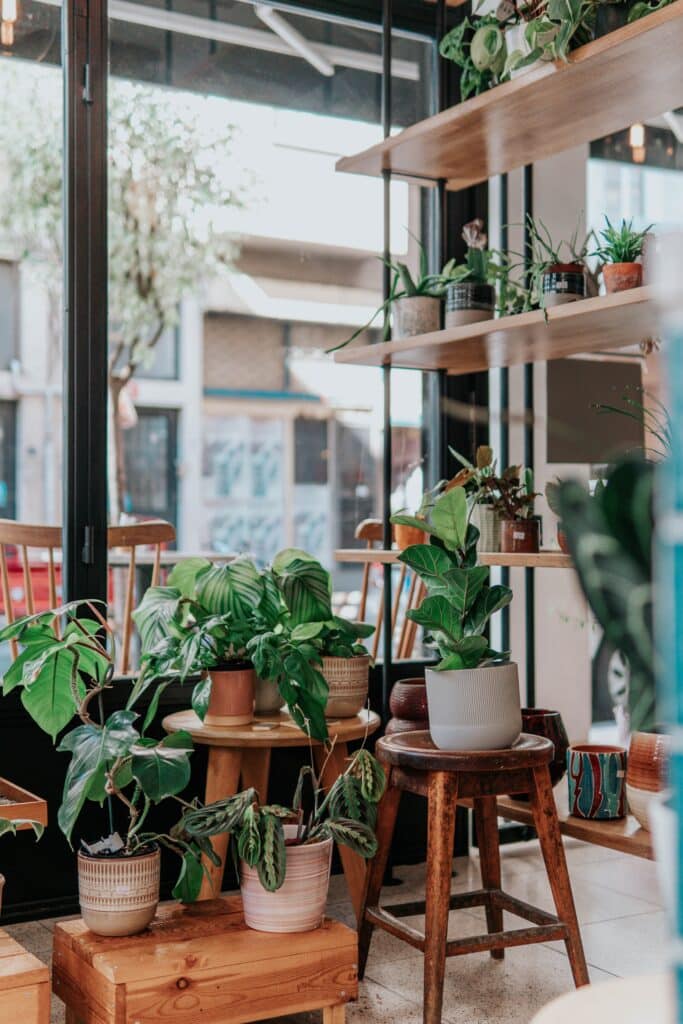Discover what indoor plants need little water that thrive with minimal watering. Explore options like snake plants, ZZ plants, succulents, and peace lilies, perfect for those seeking easy-care greenery.
Are you tired of constantly watering your indoor plants? If so, then “Low-water Indoor Plants: A Guide to Choosing Species” is the perfect article for you. In this comprehensive guide, you will discover what indoor plants need little water. A variety of plant species that require minimal watering, allowing you to effortlessly maintain a lush and vibrant indoor garden.
Say goodbye to the hassle of frequent watering, and say hello to a thriving, low-maintenance plant oasis in your home. With this guide, selecting the ideal low-water indoor plants has never been easier.
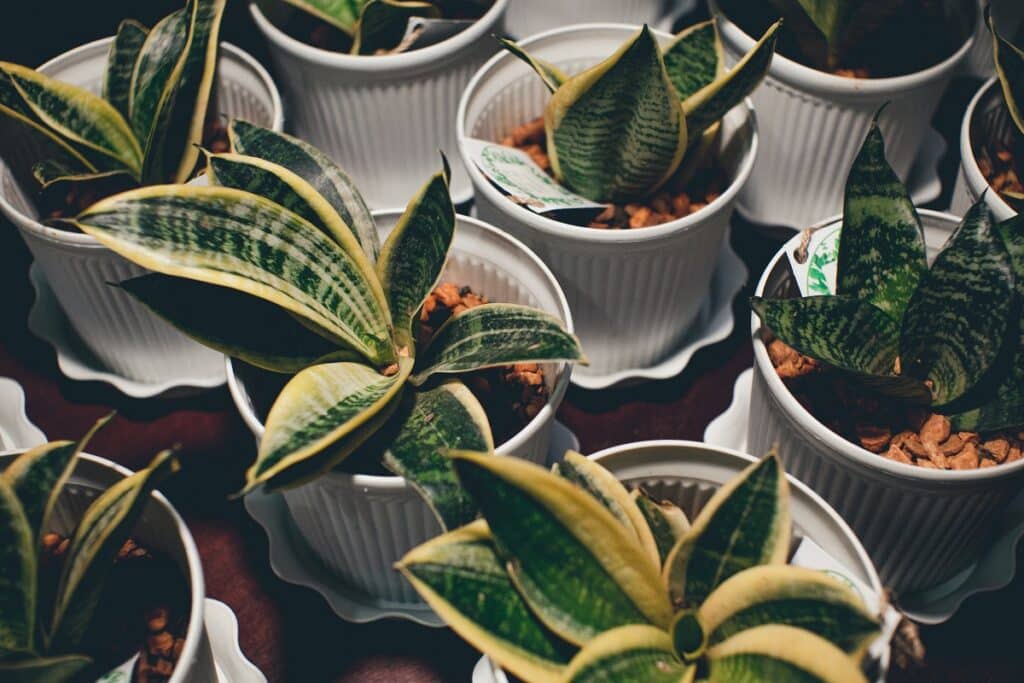
Understanding Low-Water Indoor Plants
Indoor plants add a touch of beauty and serenity to any space, but not all plants thrive in the same conditions. If you’re looking for low-maintenance plants that require minimal watering, low-water indoor plants are the perfect choice. These plants have adapted to survive in environments with limited water availability, making them resilient and easy to care for. Understanding the key characteristics of these plants, the benefits they offer, and dispelling common misconceptions will help you make an informed decision when selecting low-water indoor plants for your home or office.
Key Characteristics of Low-Water Plants
Low-water indoor plants possess several characteristics that enable them to thrive with little water. These plants typically have succulent leaves, which store water and allow the plants to survive during periods of drought. Additionally, low-water plants often have smaller leaves or waxy coatings that reduce moisture loss through evaporation. These adaptations make them well-suited for indoor environments, where the humidity levels are often lower than outdoor conditions.
Benefits of Having Low-Water Indoor Plants
One of the significant advantages of low-water indoor plants is their minimal water requirements. These plants can survive and even thrive with infrequent watering, making them perfect for busy individuals or those who travel frequently. Additionally, low-water plants contribute to better indoor air quality by filtering out toxins and releasing oxygen. They can also help increase humidity levels in dry indoor spaces, improving overall comfort. The aesthetic appeal of low-water indoor plants is another significant benefit, as they come in various shapes, sizes, and colors, adding beauty and tranquility to any room.
Misconceptions About Low-Water Indoor Plants
There are common misconceptions surrounding low-water indoor plants, often leading people to believe that these plants are difficult to care for or do not require any water at all. While it is true that low-water plants have adapted to survive in harsh conditions, they still require some watering to thrive.
Neglecting to water low-water plants completely can result in their decline or even death. It is essential to find a balance between providing enough water to sustain the plants without overwatering them. Understanding the specific needs of each plant species is crucial for their successful care and maintenance.
Essential Care Tips for Low-Water Indoor Plants
Caring for low-water indoor plants is relatively straightforward if you keep a few essential tips in mind. These tips will ensure that your plants receive the right amount of water, are planted in suitable soil, receive adequate sunlight, and are kept in an optimal indoor temperature.
Watering Intervals and Amounts
The watering needs of low-water indoor plants will vary depending on the specific species and environmental factors. Generally, it is better to underwater than to overwater these plants. Wait until the top inch of soil feels dry before watering them thoroughly. Ensure that excess water drains out of the pot to avoid root rot. Remember, it is always better to underwater and adjust accordingly than to overwater and risk damaging the plants.
Proper Soil Type for Water Conservation
Choosing the right soil type is vital for water conservation in low-water indoor plants. Opt for well-draining soil mixes specifically formulated for succulents and cacti. These mixes typically contain materials like sand, perlite, and peat, which help prevent waterlogging and promote root health. Avoid moisture-retentive soils or those that compact easily, as they can lead to excessive moisture and rotting roots.
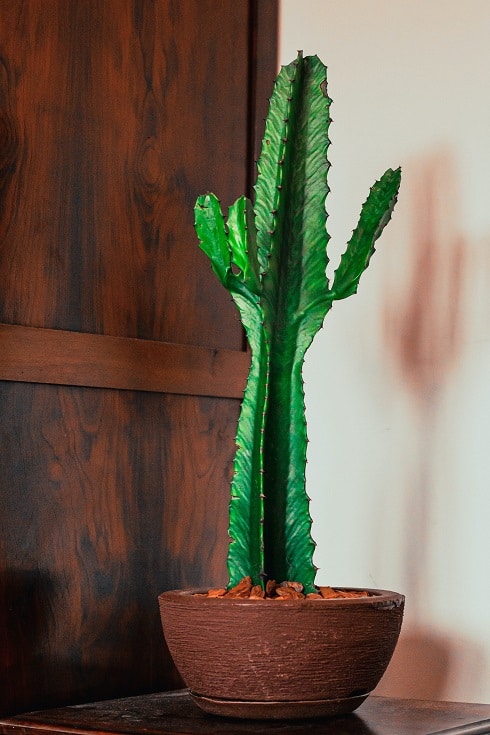
Appropriate Amounts of Sunlight
Providing appropriate amounts of sunlight is essential for the growth and overall well-being of low-water indoor plants. Most low-water plants prefer bright, indirect light rather than direct sunlight. Place them near windows or in areas where they can receive ample filtered light throughout the day. However, be cautious of placing them in locations with intense afternoon sunlight, as it can scorch their leaves.
Ideal Indoor Temperatures
Low-water indoor plants generally thrive in average indoor temperatures ranging from 60°F to 75°F (15°C to 24°C). Avoid exposing them to extreme temperature fluctuations, such as placing them near drafty windows or heating vents. Maintaining a stable temperature will help keep the plants healthy and prevent stress-related issues.

Top Recommended Low-Water Indoor Plants
If you’re looking for the best low-water indoor plants to bring into your space, here are some fantastic options that are both visually appealing and easy to care for:
Cacti
Cacti are iconic low-water plants that come in numerous shapes and sizes. They exhibit a unique appearance, with thick, fleshy stems covered in spines. These desert natives are well-adapted to arid conditions, storing water in their succulent tissues. Cacti require minimal watering and prefer bright light. They make excellent additions to windowsills or areas with direct sunlight.
Spider Plants
Spider plants, scientifically known as Chlorophytum comosum, are beloved for their graceful arching leaves and air-purifying qualities. These low-water indoor plants thrive in bright, indirect light and can tolerate a wide range of temperatures. Spider plants prefer slightly moist soil and should be watered when the top inch of soil feels dry.
Snake Plants
Snake plants, also called Sansevieria, are renowned for their striking, upright leaves that resemble snakeskin. They are excellent choices for low-light environments and are incredibly resilient. Snake plants have low water requirements and prefer to dry out between waterings. They adapt well to various temperature conditions and are known for their air-purifying abilities.
Aloe Vera
Aloe vera is a popular succulent known for its fleshy leaves filled with healing gel. It thrives in bright light but can also tolerate partial shade. Aloe vera plants are well-suited to indoor environments due to their low water needs. These plants prefer well-draining soil and should be watered sparingly, allowing the soil to completely dry out between waterings.
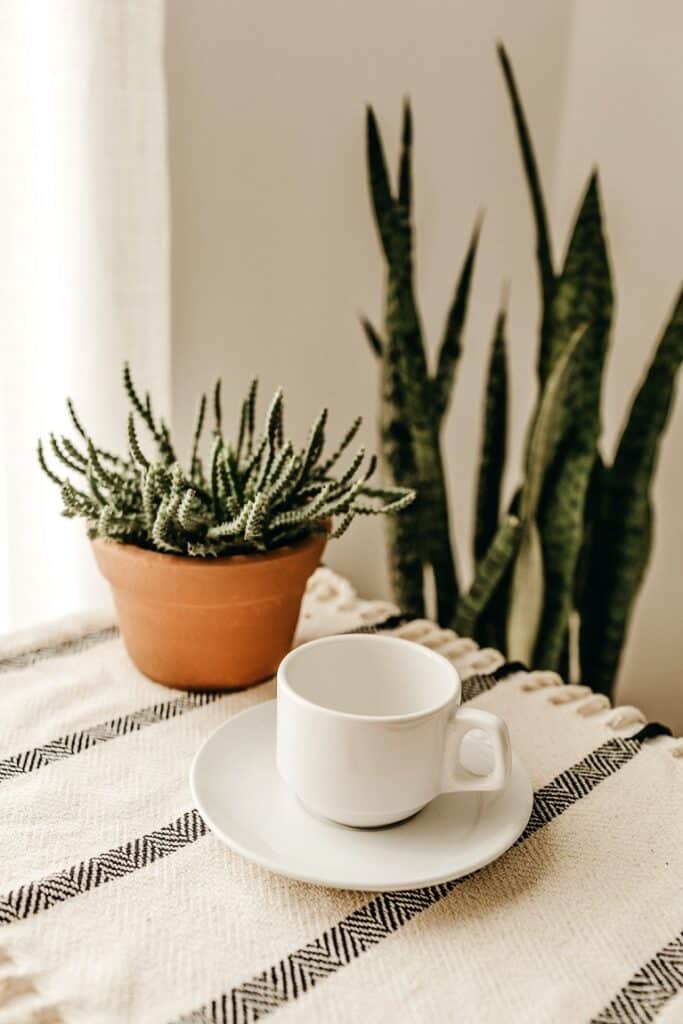
ZZ Plants
ZZ plants, scientifically known as Zamioculcas zamiifolia, are native to Eastern Africa and have become increasingly popular as low-water indoor plants. Their glossy, dark green leaves add a touch of elegance to any space. ZZ plants thrive in low-light conditions and can tolerate neglect, making them perfect for beginners. Water ZZ plants sparingly, allowing the soil to dry out between waterings.
Rubber Plants
Rubber plants, or Ficus elastica, are known for their large, dark green leaves that have a leathery texture. They add a bold statement to any room and are relatively low-maintenance. Rubber plants prefer bright, indirect light and a well-draining soil mix. They should be watered when the top inch of soil feels dry, avoiding overwatering to prevent root rot.
In-Depth Analysis: Cacti
Cacti are fascinating and diverse plants that have adapted to survive in some of the harshest environments on earth. When choosing cacti for indoor settings, it’s essential to understand the different types available, their care requirements, and the benefits they bring to your space.
Types of Indoor Cacti
There are numerous types of indoor cacti to choose from, each exhibiting unique shapes, sizes, and spination. Some popular indoor cacti species include the Bunny Ears Cactus (Opuntia microdasys), Christmas Cactus (Schlumbergera sp.), and Hedgehog Cactus (Echinocereus sp.). Each species has its distinct characteristics that make it suitable for indoor cultivation.
Proper Cacti Care and Maintenance
Caring for indoor cacti involves providing the right environmental conditions and meeting their specific needs. These plants require bright light, ideally in the form of direct sunlight for several hours each day. However, they can also adapt to lower light conditions if necessary. Proper watering is crucial for cacti, as they require a well-draining soil mix and should only be watered when the soil is completely dry. Overwatering can lead to root rot and other moisture-related issues.
Benefits and Uses of Cacti
Apart from their aesthetic appeal, cacti also offer various benefits and uses. Indoor cacti are known for their ability to remove and filter toxins from the air, improving indoor air quality. Additionally, certain cacti species, such as the Aloe Vera, have healing properties and can be used for skincare, soothing burns, and promoting overall well-being. Cacti are also drought-resistant plants, making them an excellent choice for water conservation efforts.
In-Depth Analysis: Spider Plants
Spider plants are among the most popular low-water indoor plants, known for their cascading, arching leaves. Understanding the different varieties available, how to care for them, and the potential health benefits they offer will help you make the most of these versatile plants.

Varieties of Spider Plants
Spider plants come in several varieties, each with its unique characteristics. The most common variety is the Chlorophytum comosum ‘Vittatum,’ featuring long, slender leaves with green edges and a white stripe down the center. Another popular variation is the Chlorophytum comosum ‘Bonnie,’ known for its curly leaves. Consider the specific preferences and appearances of different spider plant varieties when choosing the perfect one for your indoor space.
How to Care for Spider Plants
Caring for spider plants involves providing the right amount of light, water, and occasional fertilization. These plants thrive in bright, indirect light, and direct sunlight should be avoided to prevent damage to the leaves. Spider plants prefer slightly moist soil and should be watered when the top inch of soil feels dry. Regularly misting the leaves can help maintain humidity levels, especially in dry indoor environments. Fertilize spider plants every few months during the growing season to support healthy growth.
Potential Health Benefits of Spider Plants
Apart from their visual appeal, spider plants have been linked to potential health benefits. These plants are known for their air-purifying properties, removing harmful airborne toxins such as formaldehyde and xylene. Spider plants release oxygen and increase humidity levels, which can alleviate symptoms associated with dry indoor environments, such as dry skin and respiratory discomfort. Having spider plants in your home or office can contribute to a healthier and more comfortable living or working space.
In-Depth Analysis: Snake Plants
Snake plants, also referred to as Sansevieria, are excellent choices for low-water indoor plants. Their unique appearance, different species variations, and ability to thrive in a wide range of environmental conditions make them popular among plant enthusiasts. Understanding the different snake plant species, their care requirements, and the advantages they offer will help you successfully cultivate these elegant and low-maintenance plants.
Different Snake Plant Species
There are several snake plant species to choose from, each with its distinct leaf patterns and sizes. Some common snake plant species include Sansevieria trifasciata, Sansevieria cylindrica, and Sansevieria laurentii. Sansevieria trifasciata, also known as the Mother-in-Law’s Tongue, is a popular choice. It features long, upright leaves with green coloring and yellow accents. Sansevieria cylindrica, often called the Cylindrical Snake Plant, has cylindrical, spear-like leaves. Sansevieria laurentii, known as the Variegated Snake Plant, has tall, sword-shaped leaves with yellow margins.
How to Keep Snake Plants Healthy
Keeping snake plants healthy involves providing the right amount of light, well-draining soil, and appropriate watering. These plants thrive in bright, indirect light but can tolerate lower light conditions. Snake plants prefer well-draining soil and should only be watered once the top inch of soil feels dry. Overwatering can lead to root rot, so it is crucial to allow the soil to dry out. Snake plants can adapt to a wide range of temperatures and are relatively resilient, making them suitable for various indoor environments.
Advantages of Snake Plants in Indoor Settings
Snake plants offer numerous advantages when grown indoors. Their remarkable air-purifying properties make them great additions to any space. Snake plants can filter out toxins such as formaldehyde, trichloroethylene, and benzene, improving the air quality and promoting a healthier living or working environment. Additionally, snake plants release oxygen during the night, making them ideal bedroom plants. Their low water requirements, resilience, and diverse range of species variations make them a favorite choice for both beginner and experienced plant enthusiasts.

In-Depth Analysis: Aloe Vera
Aloe vera plants are renowned for their medicinal properties, making them not only visually appealing but also practical additions to any indoor space. By understanding the different types of aloe vera for indoor cultivation, how to care for them, and the various ways to utilize aloe vera for natural remedies, you can make the most of these versatile and beneficial plants.
Types of Aloe Vera for Indoors
Several types of aloe vera are suitable for indoor cultivation, each with its unique characteristics. Aloe vera barbadensis, commonly known as the true aloe or medicinal aloe, is the most widely recognized and commonly used species. Other varieties, such as Aloe vera chinensis and Aloe vera arborescens, can also be grown indoors. Consider factors such as growth habits, leaf color, and specific medicinal properties when selecting the right type of aloe vera for your indoor garden.
Aloe Vera Care Instructions
Caring for aloe vera plants involves providing the right amount of light, water, and well-draining soil. These plants thrive in bright, indirect light but can tolerate partial shade. Aloe vera plants should be watered deeply but sparingly, allowing the soil to completely dry out before watering again. Overwatering can lead to root rot, so it is essential to practice moderation. Aloe vera plants prefer well-draining soil mixes specifically formulated for succulents and cacti. These soils help prevent excess moisture and promote root health.
Utilizing Aloe Vera for Natural Remedies
One of the significant benefits of having aloe vera plants indoors is their medicinal uses. The gel found within the leaves of aloe vera can be used topically to soothe burns, heal wounds, and reduce inflammation. Aloe vera gel is known for its moisturizing properties and can be used to soothe dry or irritated skin. Additionally, aloe vera gel can be consumed to support digestive health and aid in detoxification. Harvesting fresh aloe vera gel from your indoor plants ensures access to high-quality, natural remedies whenever needed.
In-Depth Analysis: ZZ Plants
ZZ plants, scientifically known as Zamioculcas zamiifolia, have gained popularity as low-water indoor plants due to their unique appearance and ability to thrive in a wide range of conditions. By delving into the different ZZ plant species, understanding their care requirements, and appreciating the positive impacts they offer, you can make an informed decision about incorporating these striking plants into your indoor space.
Species of ZZ Plants
There is one primary species of ZZ plant – Zamioculcas zamiifolia. While variations in leaf color and size exist, all ZZ plants share common characteristics, such as their glossy, deep green foliage and upright growth habit. This species has adapted to survive in low-light conditions and periods of drought, making it an ideal choice for indoor cultivation.
Guidelines for ZZ Plant Care
Caring for ZZ plants involves providing the right amount of light, well-draining soil, and appropriate watering. These plants thrive in low-light conditions, making them suitable for areas with minimal natural light or where other plants may struggle. ZZ plants can also handle a few hours of direct sunlight, but it is essential to avoid prolonged exposure, as it may scorch the leaves. ZZ plants prefer well-draining soil mixes and should be watered sparingly, allowing the soil to dry out between waterings. Overwatering can lead to root rot and other moisture-related issues.
Positive Impacts of ZZ Plants
Adding ZZ plants to your indoor space offers numerous benefits beyond their visual appeal. These low-water indoor plants are known for their air-purifying abilities, removing toxins such as xylene and toluene from the air. ZZ plants can help improve indoor air quality, promote a healthier living or working environment, and contribute to your overall well-being. Their resilience, ease of care, and tolerance for low-light conditions make them a top choice for both experienced and novice plant enthusiasts.
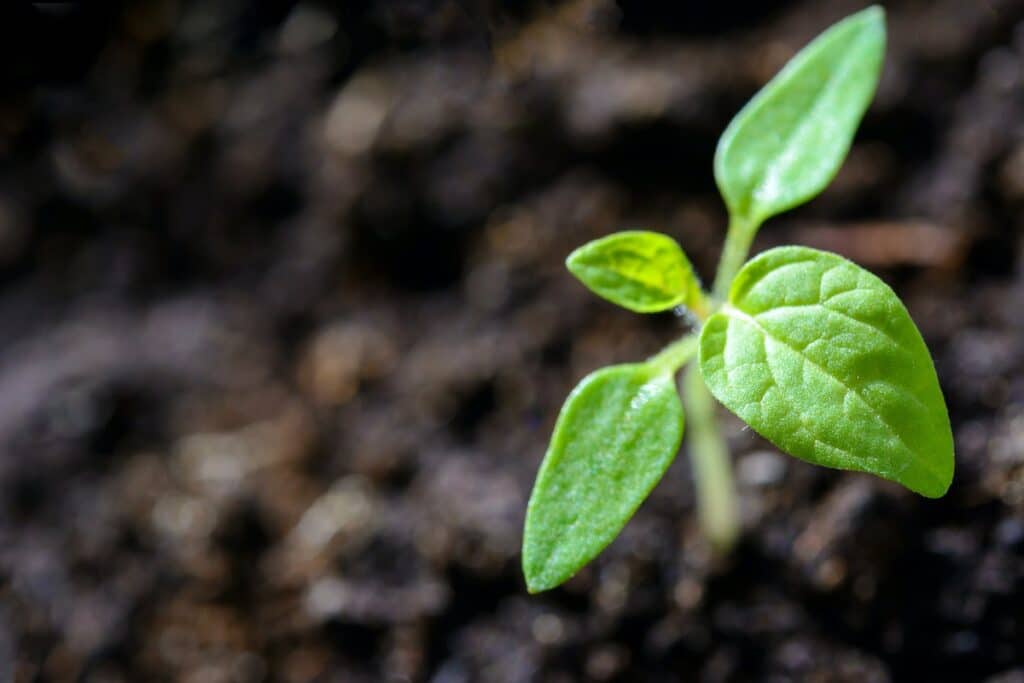
In-Depth Analysis: Rubber Plants
Rubber plants, also known as Ficus elastica, are stylish and robust low-water indoor plants that add a bold touch to any room. By exploring the different kinds of rubber plants, learning how to care for them, and understanding the benefits they offer, you can create a vibrant and thriving indoor environment.
Different Kinds of Rubber Plants
There are several types of rubber plants available, each characterized by its leaf shape, color, and growth pattern. Some popular rubber plant varieties include Ficus elastica ‘Tineke,’ with its striking variegated leaves, and Ficus elastica ‘Burgundy,’ featuring deep burgundy leaves. The Ficus elastica ‘Ruby,’ with its dark reddish leaves, is another eye-catching variety. Consider the specific appearance and growth habits of different rubber plant types when selecting the perfect one for your indoor garden.
How to Look After Rubber Plants
Caring for rubber plants involves providing the right amount of light, water, and well-draining soil. These plants thrive in bright, indirect light and can tolerate partial shade. Avoid placing them in intense, direct sunlight, as it may scorch their leaves. Rubber plants prefer a well-draining soil mix and should be watered when the top inch of soil feels dry. Overwatering can lead to root rot, so it is crucial to allow the soil to dry out between waterings. Regularly wiping the leaves with a damp cloth helps keep them clean and free from dust, promoting healthy growth.
Benefits of Having Rubber Plants Indoors
Rubber plants offer multiple benefits when grown indoors. Their large, vibrant leaves add a touch of tropical elegance to any space. Rubber plants are also known for their air-purifying qualities, removing toxins such as formaldehyde from the air. Additionally, rubber plants contribute to humidity levels in indoor spaces, which can be especially beneficial in dry conditions. Their low water requirements and tolerance for a wide range of light conditions make them an excellent choice for indoor gardens and plant enthusiasts of all levels.
Creating a Low-Water Indoor Garden
Once you have chosen the low-water indoor plants that suit your preferences and space, creating a thriving indoor garden becomes an enjoyable and rewarding experience. By following a few essential guidelines and maintenance tips, what indoor plants need little water? You can create a beautiful and flourishing oasis within your home or office.

Planning Your Indoor Garden
Before diving into your indoor gardening journey, take some time to plan and visualize the layout of your space. Consider the available light conditions, floor or shelf space, and the aesthetic appeal you wish to achieve. Keep in mind the growth habits of each plant species and provide enough space for them to thrive without crowding one another.
Choosing the Ideal Location
The location of your indoor garden plays a crucial role in the success of your low-water plants. Place your plants near windows or in areas that receive ample filtered light throughout the day. If natural light is limited, consider supplementing with artificial grow lights to ensure healthy growth and prevent leggy plants. Additionally, keep in mind that extreme temperature fluctuations or exposure to drafts can stress the plants, so choose a location with stable temperatures.
Mixing and Matching Plant Species
One of the joys of indoor gardening is the ability to mix and match different plant species, creating a visually appealing and diverse ecosystem. Consider combining various types of low-water plants with different leaf shapes, colors, and sizes to add interest and depth to your indoor garden. Experiment with different combinations, and don’t be afraid to get creative to achieve the desired aesthetic.
Maintenance Tips for a Flourishing Indoor Garden
Regular maintenance is essential for maintaining a healthy and thriving low-water indoor garden. Monitor the moisture level of the soil, only watering when the top inch feels dry. Avoid overwatering, as many low-water plants are susceptible to root rot.
Check the leaves periodically for signs of pests or diseases, and take immediate action if necessary. Prune or trim the plants as needed to maintain their shape and promote healthy growth. Lastly, fertilize your low-water indoor plants occasionally, following the specific requirements of each species.
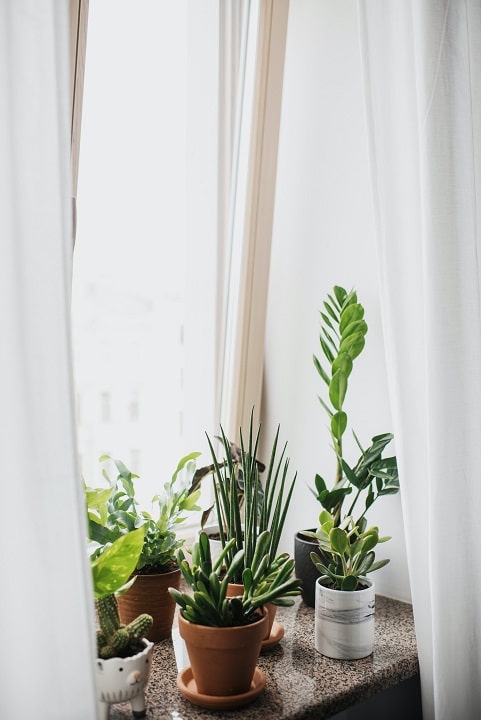
Conclusion
By following these care tips and guidelines, you can enjoy the beauty and benefits of a flourishing low-water indoor garden that not only enhances your living or working space but also brings you a sense of joy and tranquility. Remember to adjust your care routine based on the distinct needs of each plant species, and enjoy the journey what indoor plants need little water of nurturing these resilient and captivating plants.




